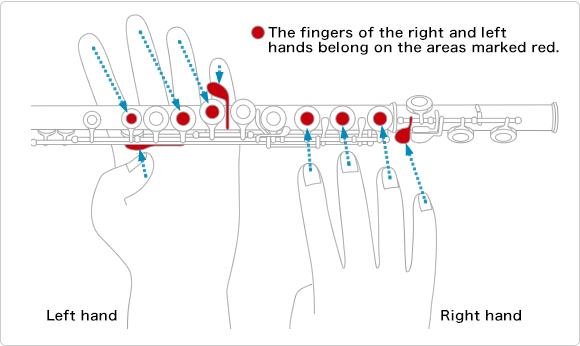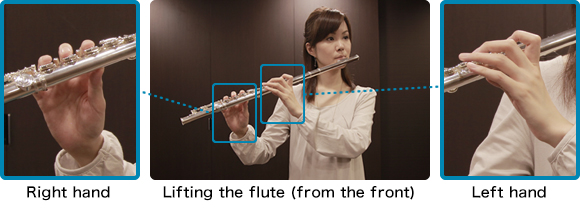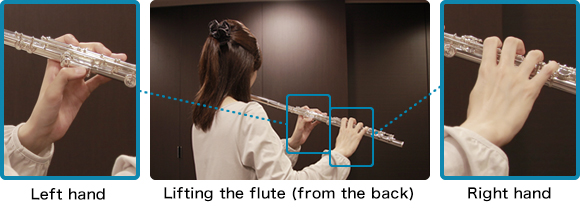Using the head joint, move your tongue as if saying "too-too" while blowing. You'll notice the "too-too" motion makes the sound much clearer than the "foo-foo" motion.
* Pay close attention to motion of your tongue when blowing if you want to produce a good sound.
* Pay close attention to motion of your tongue when blowing if you want to produce a good sound.
Tonguing with the head joint
Glissando techniques
There are a variety of different glissando techniques. Broadly speaking, glissando techniques can be divided into continuous glissando used on instruments like the violin and the trombone, and discrete glissando used on instruments with space between distinct tones.
A continuous glissando can be played with on an instrument with covered keys as well, but are never as smooth as on instruments with ring keys. There are also situations in which glissandos are impossible because of the range. For a continuous glissando on an instrument with covered keys, blow while slowly moving through the keys in order, and adjust the angle so that the pitch changes continuously.
There are, however, few pieces for flute that require any continuous glissando, so it is more usual for flutist to use a discrete glissando technique similar to that used on the piano.
A continuous glissando can be played with on an instrument with covered keys as well, but are never as smooth as on instruments with ring keys. There are also situations in which glissandos are impossible because of the range. For a continuous glissando on an instrument with covered keys, blow while slowly moving through the keys in order, and adjust the angle so that the pitch changes continuously.
There are, however, few pieces for flute that require any continuous glissando, so it is more usual for flutist to use a discrete glissando technique similar to that used on the piano.
Assembling the flute
If the flute is not put together properly, it may break, or become incapable of producing a good sound. Pay particular attention to where you hold the flute when putting it together.
- Hold the foot joint and the body joint as shown in the picture, and slide them together. Do not grip the keys while doing this.

- Hold the head joint and the body joint as shown in the picture, and slide them together. As before, do not grip the keys while doing this.

Holding the flute
Paying close attention to the position of your thumb, make sure that the inside of the first joint of your left index finger is stays in contact with the flute, and hold the flute with your fingers in their respective positions.

Lifting the flute to play
When holding the flute up to play, your shoulders and elbows should be relaxed.


Fingering and producing sound
Once you have mastered holding the clarinet and producing sound, try playing with the fingerings shown below.
*High D is easier to play if you release the index finger on your left hand.
Once you have learned to play the C scale, try to playing some music by sight reading.
*High D is easier to play if you release the index finger on your left hand.
Once you have learned to play the C scale, try to playing some music by sight reading.

Comments
Post a Comment